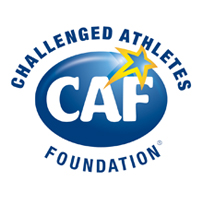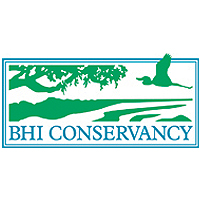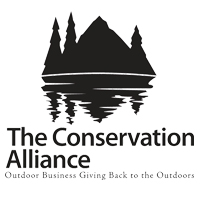The Badwater Report by 2002 finisher
Originally published at www.StLouisUltraRunnersGroup.net
This is a long report—but then so was the race!!
When I first read about Badwater several years ago I was intrigued—135 miles across blazing hot Death Valley in the middle of summer—starting at the lowest point in the country and ending more than half way up the highest. As I ran more and more ultras I discovered that I like and do well in road and track races and that I don’t mind hot weather. I knew that at some point I had to try BW—it was my kind of ultra. Seeing the video “Running on the Sun” and reading Kirk Johnson’s book “To the Edge” clinched it. I applied and was accepted into the 2002 Badwater 135. This is an account of my race.
I obtained advice from a number of folks with BW experience including Steve Silver, Paul Stone and Jay Hodde and I read as much as I could get my hands on about the event and how to train for it. I actually started training for BW in January with gradually increasing long runs on consecutive Saturdays which continued through February and March, building up to a 38 miler. I would then do half the distance that I ran on Saturday the next day on the Sunday morning. I had weekly totals of 70 – 80 miles towards the end of this period. In April I ran the Double Chubb 50K in 5:26 and in May I ran 104.56 miles at the Cornbelt 24 hour and then the Berryman 50 miler on Memorial weekend in 10:24. I backed off a bit on the mileage for a couple of weeks and then ran a couple of 70+ mile weeks a good deal of which was in the midday or afternoon sun. This brought me to the end of the first week of July and then I tapered down to 30 miles a week running almost every day but keeping the runs short. My last run was an easy 3 miler on the Saturday before the race which was to start on Tuesday July 23rd.
I began my heat training in late April. This consisted of the following:
- Sitting in the dry sauna at the gym (no thermostat, they always kept the temp about 165 F – I could only stay in for 15-20 minutes).
- Walking up and down 12 flights of stairs at work, the stairwell was not air conditioned and faced the southeast so the temp would get well over 100 F by midday.
- Driving home from work with the windows up in the van and with the heater and fan all the way up blasting hot air in my face for 30 minutes.
- Getting into heavy sweatpants, two long sleeve shirts, a nylon jacket zipped up to the chin, a winter wool cap and gloves for a an hour workout on the Nordic Trac ski machine in the 90 – 100 F sun or for cutting the grass or for running/walking miles and miles at the track.
I went to Badwater knowing I had prepared well but I was still very nervous because I’d never been to Death Valley and I had no idea how my body would hold up under those brutal conditions. Suffice it to say my training must have worked as I finished in 40:45, well under the 48 hour time required to buckle and good for 11th place overall and 7th place among the men (out of 80 + starters). Not bad for a 56 year-old Badwater novice, if I do say so myself. Here’s how it went.
I had a good crew, consisting of Tom Reich, an ultrarunning buddy from home in St. Louis and Naeem Ravat, a Badwater wanna-be from Houston. I thought long and hard about what supplies I would need which we picked up in Las Vegas on Sunday on the way to the race. I had arranged for two more crew and a second car but unforeseen circumstances prevented them from making the trip. We had a rental minivan with the two rear bench seats removed to make room for all of our supplies. One large cooler was packed with three ice blocks, ice cubes and filled with water. This would be our ice cold water supply, and it worked really well – we never ran short of cold water. We had 3 additional small Styrofoam coolers with ice for food, other drinks and cold towels and sponges.
I set out from BW (I was in the 6 am start group) at a 13 min/mile pace and felt very good through the first check point at Furnace Creek (17 miles). In fact I was sweating enough under my white long sleeved Sun Precautions top that the evaporating sweat made me feel quite comfortable. I started out by running 3 minutes and walking 4 minutes when I could, although sometimes the course dictated when I would run or walk. I didn’t want to run up the hills and I didn’t want to walk on down-hills. Right from the start I took an electrolyte cap and a GU every hour – and continued this for the duration of the race. I would also drink two 20 ounce bottles of fluid, one water and one Succeed Ultra approximately every 25 minutes. It was 9:30 when I checked in at Furnace Creek, the sun was well up and the temp was around 110 F.
One aspect of this race which attracted me was the scenery—at the start you have mountains on both sides as you make your way north through Death Valley. The light cast by the rising sun on the mountains to the west was spectacular. The next 25 miles to Stovepipe Wells (42 miles) is gently undulating road through the hottest part of the course. By this time I was drinking close to a gallon of fluid (water, Succeed Ultra and Gatorade) per hour. Interestingly, I remained very well hydrated throughout the entire race as my urine never got yellow – first time ever that my pee remained clear for the duration of an ultra. The temp in the support van read 130 F as I was coming into Stovepipe Wells at 4 pm. A woman runner who had passed me around 30 miles said try putting a cold wet towel over your head (under your hat) and shoulders while running to help keep you from overheating which I found to be good advice, it helped keep me cooler and more comfortable than I otherwise would have been. I was also tying a fresh ice cold neck cooler around my neck every two miles which helped keep you cooler.
Somewhere in here I sensed a hot spot on my left heel—a developing blister. Not wanting to let it get too bad I stopped and had my crew bandage it up. Naeem had stayed for Denise Jones’ foot clinic after the pre-race meeting and he knew exactly what to do – pop the little sucker, add bandage, cover with elastakon tape, add tincture of whatever its called to the edges of the elastakon and cover edges with micropore tape to prevent rolling. I could feel the blister for a few miles and then never heard from it again until the race was almost over. I had run the first 40 miles or so in my Nike Pegasus and now I changed into a lighter pair of shoes, my Addidas Tapers. They felt good on my feet if a little tight in the toes as my feet were swelling.
By Stovepipe Wells I was really feeling the heat and needed to lie down in the shade on the concrete porch in front of the store with ice cold wet towels over me for 15 minutes. Tom and Naeem went in and bought me a popsicle—ahhhhh—very good, so I had two more. After stretching my back it was up and going again, up the long 17 mile ascent to Townes Pass at 59 miles. Tom was with me now, keeping me company as we talked on the long ascent. For the first few miles of this climb I stopped every two miles to sit and cool down my core body temp with cold wet towels. Naeem was handing off fresh bottles of water and Succeed Ultra, and various food items. I was eating grapes, cherries, pretzels, dates, p and j sandwiches, turkey and cheese sandwiches, cold canned fruit, yogurt and chocolate pudding. A gusty wind was blowing the 120 + F air straight down the road into our faces—something like standing in front of a very large and very hot hair drier. Dusk arrived and we turned to look back down into Death Valley which was receding in the distance. Soon the full moon peeked over the mountains to the east, it was so bright flashlights were not necessary—the moonlight cast our shadows across the road to our right. Up, up and up, mostly walking.
Near the top of the pass there were some flat stretches and little dips in the road which I ran. At the top of the pass at 59 miles, I lay down on a towel on the road and stretched my back and then was off running down the long descent into Panamint Valley, not too fast or too hard because I didn’t want to trash my quads, short steps with frequent short walking breaks was the ticket for me. There were still another 7 miles to get to the half way point. Running shirtless and hatless in the dark felt really good. It had cooled a bit at the top of the pass at 5000 feet (down to around 90 F) but now was warming up again as Tom and I approached the valley floor. I began to smell smoke from the forest fires burning off to the west. As you descend into the valley you can see the lights of Panamint Springs (72 miles) off in the distance across the valley but it will take several hours to get there. We made decent time across the valley and then started climbing again arriving at the Panamint Springs check point about 3 am. Many crew (and some runners) stop at Panamint Springs for some sleep as the resort provides a large room to sack out in, however after a short rest and stretch break I was up and moving out onto the 8 mile ascent to Father Crowleys Point at 80 miles.
This was a very twisty road with sharp blind turns. Good thing it was very early morning and there was very little traffic on the road. During this time my pacer and I heard a snarly growl come from the rocks off to our left. A minute later it was repeated, it sounded like a large animal and was cat-like, a bobcat or mountain lion perhaps. Tom left me shortly later and I was on my own for the remainder of the ascent to Father Crowley’s Point. The sun had come up a couple of hours prior to this and I marveled once again at the beauty of the mountains and shadows in the deep valleys. You go higher and higher here and have a great view back down along the twisty road. I see some runners way down there, tiny figures with toy-sized cars beside them.
Once up to Father Crowley’s point, the course levels off in an undulating sort of way. A car comes alongside of me and Tom, who is back running with me again, and a man jumps out with a camera. He runs ahead snapping photos. We run up the little hill in front of us trying to look good for the camera. He gets back in the car and as soon as it disappears around the next bend we walk again. However, with the morning sun I seem to get renewed energy and we began to put in some good miles running and walking along this stretch terrain into Darwin check point at 90 miles which I go through a little past 9 am. Between 85 and 95 miles I felt really strong and Tom and I pass 4 or 5 other runners and their crews. We hear a deep noise building quickly ahead and then a fighter jet zooms overhead with a deafening roar. He’s flying low and fast – open airspace out here I guess – no constraints – I feel as free and alive and unrestrained as that pilot must feel here in the high desert in the early morning sun, an exhilarating feeling. At Darwin I think to myself, wow you’ve gone 90 miles!! and then I realize I still had 45 miles to go, I’m only 2/3 done with this thing. But I’m feeling good and strong and ready to run. After leaving Darwin you work your way though a cut in the mountains and gradually descend from 5000 feet to about 3000 feet to the Owen Valley floor. There is a big dry salt lake bed off to the left and mountains off to the right. The jet roars past again. Dead ahead is the longest straightest black asphalt road I’ve ever seen, it just goes on and on and yup, that’s where we have to go.
This is a difficult part of the race because you don’t seem to get very far very fast, and you have to work hard mentally to keep focused and to keep up that relentless forward progress. Tom and I make a big sweeping turn and there stretched out in front of us was another seemingly endless stretch of asphalt road. The smoke from the nearby forest fires prevents us from seeing the mountains and Mount Whitney off in the distance. We run between two reflector posts alongside the road, then walk to the next one, then run, then walk, over and over again. We stop briefly every two miles for more drink and food and then go again. Every hour I still take a GU and an E-Cap and as I have been doing from the start I take some food with me back out on the course – maybe some pretzels, grapes, cherries, sandwiches, or canned fruit, yogurt or chocolate pudding. I hand off the empty containers to Naeem.
During this time I go through 100 miles in 29:27, still a little over 50K to go. Again its run a couple hundred yards, walk a couple hundred yards, from one road marker post to the next, over and over again. I changed shoes again back at about 80 miles – into my lightest shoes, my Addidas racing flats which I bought one size larger than normal. They felt good but my toes are now starting to hurt. I’m afraid to look. I change into a pair of Nike Pegasus with the toes cut out but they don’t help and I go back into the Addidas racing flats. 110 miles and 120 miles pass and then finally we come to the right turn for the 2 mile trek into Lone Pine check at 122 miles. I check in at 6:30 pm and continue directly to Whitney Portal Road for the last grunt of a climb up Mount Whitney.
Lone Pine is at 3600 feet and I have to climb 4700 feet in the next 12 miles. I’m alone now, focusing on the final stages of this race. I still have plenty of energy and determination and at first I alternate running with a very fast power walk, thinking with 2 hours and 40 minutes and 7 miles to go that maybe I can break 40 hours. It gets dark and the bats swoop low over my head investigating. A pleasantly sweet pungent odor drifts up from a valley off to my left. I’m still pushing hard with 5 miles to go at 38:45. But the climbing starts to get tougher and tougher, up the steep switchbacks and I’m reduced to 30 minute miles. I’m running out of energy. It seems to take sooooo long to go a mile at this point but finally I see the last turn in the road and the lights of the finish line. Forty hours and 45 minutes. I tell them I couldn’t get under 40 because I’m a poor climber but they quickly calculate that my time was four hours and 16 minutes from LP to the finish and tell me that is very good, that most people take 5 to 6 hours for the climb. That makes me feel better. I sit and rest. It is finished.
It is now one week later. I’m back at home in St. Louis. My feet were so swollen so badly it took 5 days before I could get my feet in my street shoes. The two worst blisters (the one on the heel and one around a big toe) are gradually healing and I’m starting to walk normally again. Everything else was fine—no pain in my legs, knees or hips. Looking back on this experience all I can say is that it was a totally awesome adventure – it’s a tough but beautiful course. Two sunrises, two sunsets, three valleys to cross and three mountain ranges to climb. I looked out at the high desert and the mountain passes in the daylight and in the moonlight and I liked what I saw. I’m glad I’m an ultrarunner. And I’m glad I took the Badwater challenge. I can’t wait to do it again.
A final note. I had heard that when you go to Badwater that you are treated like family. That’s exactly the way RD Chris Kostman, Dr. Ben and Denise Jones and all their support staff made me feel. Thanks to all of them for the hard work they put into organizing this event and keeping it alive and well. It was also a treat to meet Al Arnold, the man who started it all by being the first person to run from Badwater to Whitney Portal 25 years ago in 1977.
“Trail Turtle”; now “Desert Turtle”






